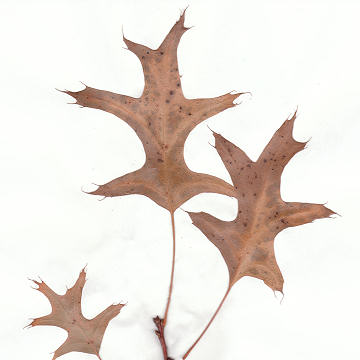

Quercus palustris - (image 1 of 5)
Taxonomy
Family: Fagaceae
Habitat
Floodplain woods, along streams and ponds. Wet-mesic swamps.
Associates
Distribution
MA and VT west to MI, IA, and KS, south to NC, TN, and OK.
Morphology
Deciduous tree to 75' high. Bark smooth or with shallow furrows and flat ridges. Leaves shiny, alternate, simple, with 5-7 bristle-tipped lobes that cut more than halfway to the midrib; leaf bases broadly cuneate, the lower pair of lobes tend to be much reduced and wedge-shaped. Acorns pale brown, the nut less than 12 mm long; the caps reddish brown, saucer-shaped, covering 1/4 to 1/3 of the nut and usually less than 12mm across.
Notes
Flowers late April to late May
Wetland indicator: Facultative Wetland
The lower branches of this species tend to droop. Not tolerant of alkaline soil but adaptable to upland sites. A good substitute for this species on more alkaline soils is Q. ellipsoidalis.
References
Gleason, Henry A. and A. Cronquist. 1991. Manual of Vascular Plants of Northeastern United States and Adjacent Canada. Second Ed.
The New York Botanical Garden. Bronx, NY
Illinois Department Natural Resources. December 1995. Common Illinois Trees
IDNR Educational Services: Project Learning Tree.
Swink, F. and G. Wilhelm. 1994. Plants of the Chicago Region.
Indiana Academy of Science. The Morton Arboretum. Lisle, Illinois.
|
Michael Hough © 2005 |